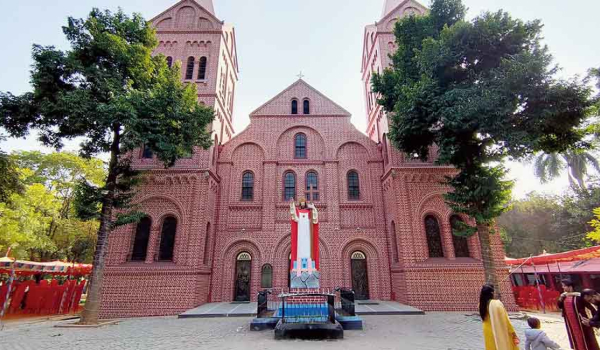
In a land area of 5,299 square kilometers, the diocesan territory covers two civil districts -- Ranchi and Lohardaga.
The population in the archdiocese is 3,618,032, according to Census 2017. Major tribal groups are Munda, Oraon, Kharia, Gond, Chick-Baraik, Gorait, Karmali, Lohra, Mahli, Asur, Birhor and Birjia. Birhors are the Hunter-gatherer primitive tribe. Mahli, Lohra, Karmali and Chik Baraik are simple artisans. Munda, Oraon, Kharia, and Gond are settled agriculturists.
Languages used in the diocesan territory are Hindi, Sadri, Mundari, Kurukh, Kharia, Kurmali, Khortha and English.
The archdiocese of Ranchi comprises civil cistrict of Ranchi (minus Khunti Subdivision) and the district of Lohardaga.
The first Belgian Jesuit to enter Chotanagpur was Father Auguste Stockman. He travelled by a bullock cart from Midnapur and after a difficult journey of a fortnight he reached Chaibasa (now in the diocese of Jamshedpur) on Nov. 25, 1868, for a brief visit. He settled down at Chaibasa on July 10, 1869. The first Munda converts were baptized on Nov. 8, 1873. His work among the Ho tribe did not yield results, so he moved towards the Ranchi district in January 1875. Other Belgian Jesuits came to Ranchi in 1877 to act as military chaplains to the troops. As the prospects of evangelization among the tribals of Chotanagpur were bright, the first mission station was opened among the Mundas. However, the real impetus came from Father Constant Lievens, who arrived at Doranda on March 18, 1885. He is often called Apostle of Chotanagpur.
To assist the missionaries, the Irish Loreto Sisters from Calcutta opened a Convent at Purulia Road, Ranchi. It was here that the Daughters of St. Anne, a diocesan congregation had their beginning in 1897. The Ursuline Sisters of Tildonk, Belgium, replaced the Loreto nuns in the same compound in 1903.
By 1927 the Ranchi mission had developed to such an extent that by decree of the Holy See, dated May 25, 1927, it was separated from the Calcutta archdiocese to form a new diocese with Ranchi as its episcopal seat and Msgr. Louis Van Hoeck as the first bishop. He was succeeded by Father O. Sevrin in 1934, who was pastor for 18 years (1934-1952).
Ranchi archdiocese has two parliamentary constituencies - Ranchi and Lohardaga. The archdiocese has seven state assembly constituencies - Ranchi, Kanke, Hatia, Khijri, Silly, Mandar, and Lohardaga.
Infrastructure facilities are not very satisfactory.
There are trains, road transport and air transport facilities.
The per capital income in the diocesan territory is Rs. 14,990 ($313) as of July 2, 2009.
Heavy Engineering Corporation (HEC) of India has a unit in Ranchi. Besides, there are several industries, such as agro equipment, aluminium, copper, chemicals and allied products.
Cell phone services are growing fast. There is one TV broadcasting station - Doordarshan - and one radio station - Akashwani - in the territory of Ranchi archdiocese. Also a few private FM radio stations are there.
Average literacy rate of 74 percent is recorded in Ranchi city.